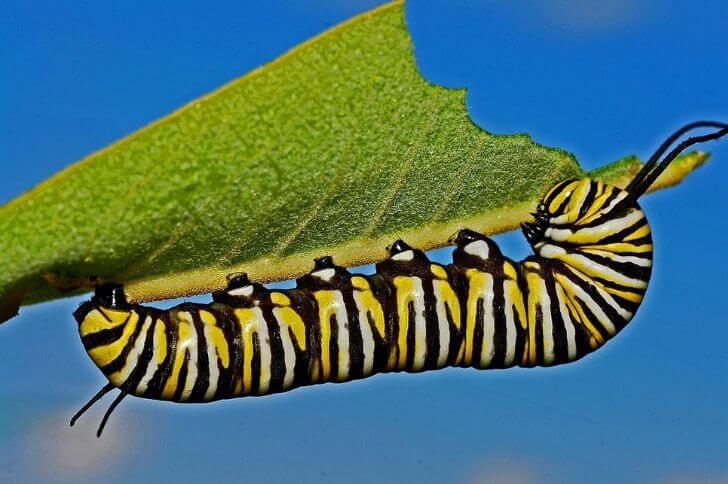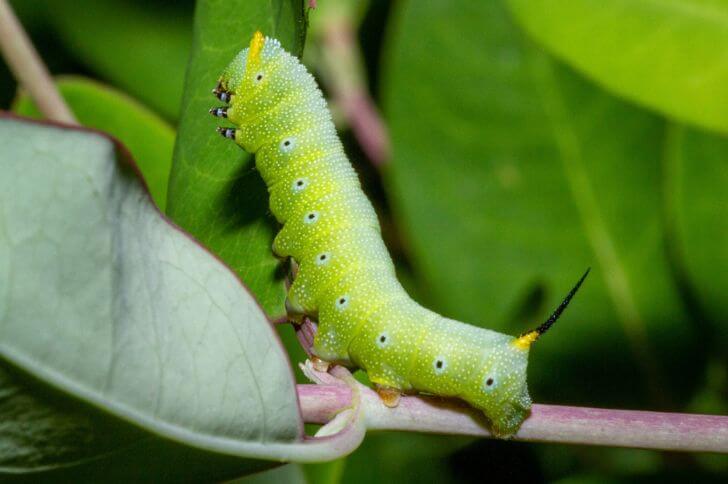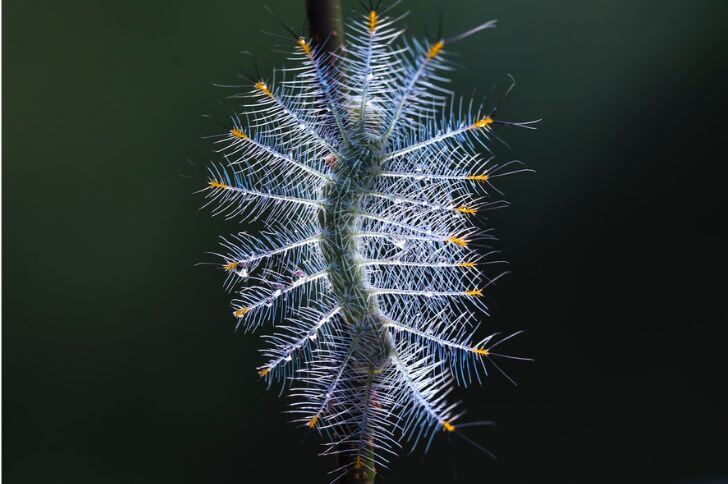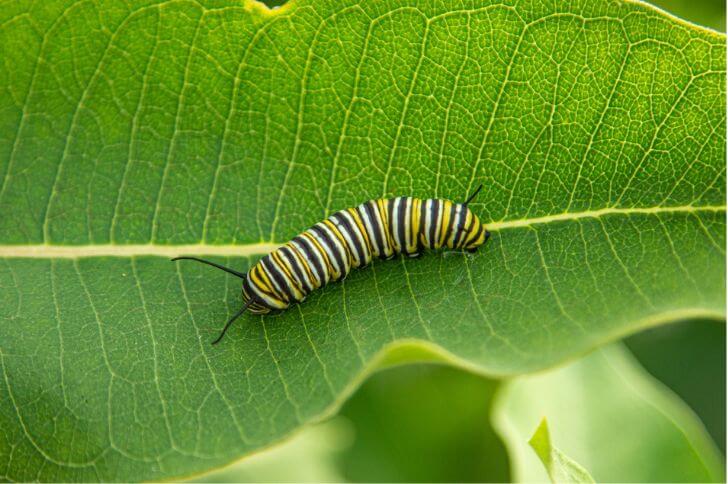10 White Fuzzy Caterpillars (with Images)
Have you ever stumbled upon a fluffy white caterpillar, innocently inching its way across a leaf? If so, chances are you couldn’t resist the urge to reach out and gently stroke its soft fuzziness.
But did you know that not all white fuzzy caterpillars are created equal? In fact, there are various types of these captivating creatures, each with their own unique characteristics.
Get ready to embark on a journey through the world of white fuzz as we explore the different types of caterpillars that will leave you marveling at nature’s diversity.
List of White Fuzzy Caterpillars
1. Spotted Apatelodes Caterpillar
One unique and intriguing white fuzzy caterpillar species that is worth mentioning is the Spotted Apatelodes Caterpillar. With its striking appearance, this particular caterpillar easily captures attention.
Covered in long white hairs, it has a fuzzy texture that makes it stand out among other caterpillars. However, what truly distinguishes the Spotted Apatelodes Caterpillar are the distinct black spots that dot its back, resembling a pattern one might find on an exotic creature from a tropical rainforest.
These conspicuous spots create an eye-catching contrast against the pure white background of the caterpillar’s body and immediately draw our gaze.
But there’s more to this fascinating creature than just its looks. The Spotted Apatelodes Caterpillar has evolved some interesting survival mechanisms over time.
To protect itself from predators, it can release irritating spines when touched or threatened. These spines contain venom that causes discomfort and irritation upon contact with human skin or mucous membranes.
This defense mechanism serves as a warning sign to potential predators to keep their distance, ensuring the caterpillar’s safety during its growth stages.
2. Virginia Tiger Moth Caterpillar
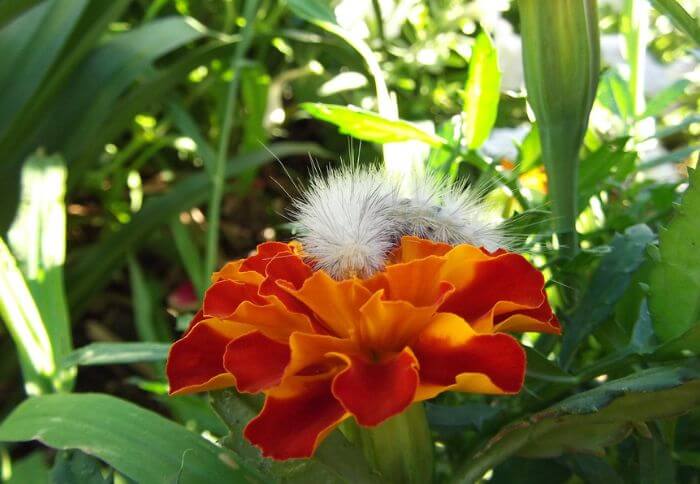
One of the most striking and intriguing caterpillars in the world of nature is undoubtedly the Virginia tiger moth caterpillar. With its distinct white and black-striped pattern, it easily stands out from other fuzzy caterpillars.
This eye-catching appearance serves as a warning to potential predators, as this caterpillar possesses urticating hairs that can cause irritation upon contact.
Interestingly, the Virginia tiger moth caterpillar has evolved a clever defense mechanism against predators. When threatened, it retracts its head under its body and exposes its bright orange abdomen.
This sudden burst of color acts as a visual distraction, diverting attention away from the vulnerable parts of its body. It’s an ingenious tactic that provides this little creature with an advantage in survival.
As we continue to delve into the fascinating world of white fuzzy caterpillars, it becomes clear that each species has unique characteristics and survival strategies.
The Virginia tiger moth caterpillar is no exception, captivating us with its bold patterns and deceptive tactics. Through their remarkable adaptations and innate instincts for self-preservation, these small creatures demonstrate just how extraordinary nature truly is.
3, Sycamore Tussock Moth Caterpillar
The Sycamore Tussock Moth Caterpillar may appear soft and fuzzy, but don’t let its delicate appearance fool you. This caterpillar is armed with an array of stinging spines that can cause severe irritation to anyone unfortunate enough to touch it.
These spines are not just for show – they are a powerful defense mechanism, deterring predators such as birds or small mammals from approaching.
One fascinating aspect of the Sycamore Tussock Moth Caterpillar is its unique appearance. Its body is covered in tufts of hair-like bristles that give it a frosted, snow-white appearance.
This camouflage allows it to blend seamlessly into its surroundings, making it difficult for potential threats to spot it. In addition, these hairs serve another purpose: acting as sensors for temperature and humidity levels.
The caterpillar’s survival depends on finding the right conditions for molting and pupation, so being able to constantly monitor its environment is crucial.
While often overlooked due to their small size and seemingly harmless demeanor, Sycamore Tussock Moth Caterpillars play an important role in our ecosystem.
As herbivores, they feed on the leaves of sycamore trees – helping regulate their growth and preventing overcrowding. Additionally, these caterpillars provide food for a variety of species including birds, spiders, and wasps through various stages of their life cycle. Their presence serves as a vital link within the intricate web of life that exists within our forests.
Related Read: Check green caterpillars with red heads
4. Rubber Tree Caterpillar
One of the most fascinating white fuzzy caterpillars is the Rubber Tree Caterpillar. This unique caterpillar species derives its name from its preference for feeding on rubber tree leaves.
As it grows, its body becomes covered in a dense layer of soft white hairs that give it a fluffy appearance. The combination of its vibrant green body and strikingly fluffy texture make the Rubber Tree Caterpillar an eye-catching sight in gardens and forests.
What sets the Rubber Tree Caterpillar apart from other white fuzzy caterpillars is not just its appearance but also its behavior. Unlike many other caterpillars that are known to be solitary creatures, these little fluff balls tend to cluster together when they’re feeding.
It’s not uncommon to spot several of them devouring rubber tree leaves side by side in what looks like a family gathering or social event.
This unique trait suggests that their fuzzy coats might serve more than just visual appeal, potentially providing protection against predators or insulation during colder periods.
If you ever come across a group of Rubber Tree Caterpillars during your nature walks, take a moment to observe their interactions and marvel at their distinctly adorable appearances among other types of white fuzzy caterpillars.
5. Fall Webworm Caterpillar
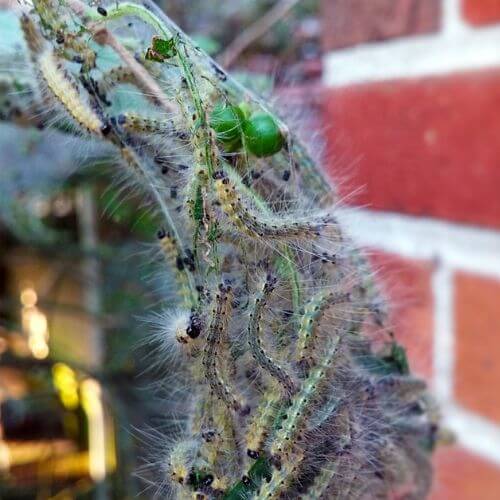
The Fall webworm caterpillar is a unique and fascinating creature that emerges in the autumn months, adding a touch of intrigue to the vast world of white fuzzy caterpillars.
These caterpillars are known for their distinct appearance – they are covered in dense white hairs that give them a fluffy and cotton-like texture. This feature not only provides insulation but also acts as camouflage, helping them blend seamlessly into their surroundings.
But what sets the Fall webworm caterpillar apart from its counterparts is its unparalleled ability to construct intricate webs.
These silk structures serve as protective shelters where groups of caterpillars live together while feasting on the leaves of host trees. As if this communal living arrangement wasn’t remarkable enough, these webs can span several meters in length and envelop entire branches, creating an enchanting sight amidst the autumn foliage.
Interestingly, despite their rather menacing appearance with rows of bristly spines along their backs, Fall webworm caterpillars are generally harmless and pose no significant harm to plant life or humans.
In fact, these voracious eaters play an essential ecological role by consuming excess foliage and promoting tree health by removing weak or damaged leaves.
6. Hickory Tussock Moth Caterpillars
Hickory tussock moth caterpillars are some of the most fascinating white fuzzy caterpillars you can come across. With their distinctive appearance, they look almost like cotton candies crawling in the wild.
However, don’t be fooled by their soft and fluffy exterior – these caterpillars carry a hidden danger.
While it may seem tempting to touch or even cuddle with these adorable-looking creatures, it’s important to exercise caution as they possess tiny spines that release venomous irritants when touched.
These irritants can cause severe itching, rashes, and even allergic reactions in some individuals. So next time you encounter a hickory tussock moth caterpillar in the wild, it’s best to admire them from a safe distance instead of risking an unpleasant encounter.
Despite their potentially harmful defense mechanisms, hickory tussock moth caterpillars also play an important role in our ecosystem.
They primarily feed on the leaves of trees such as hickory and oak, meaning they act as natural pruning agents while helping maintain balance within forest ecosystems. Additionally, these unique caterpillars are prey for many birds and other insectivores – serving as a crucial part of the food chain.
7. Laugher Caterpillar
The Laugher Caterpillar, also known as the comedian of the forest, is a unique creature that brings joy wherever it goes. With its vibrant white fur and a distinctive yellow stripe running down its back, this caterpillar immediately catches the eye.
But what truly sets it apart is its peculiar behavior – when threatened or disturbed, instead of hiding or trying to intimidate its predators, it lets out a series of high-pitched giggles mimicking human laughter.
This incredible defense mechanism not only confuses its adversaries but also serves as a reminder of nature’s boundless creativity.
This delightful caterpillar can be found in various parts of North America, particularly in wooded areas with ample vegetation. Its diet mainly consists of leaves and foliage from a wide range of trees.
Despite being small and harmless, these creatures have managed to develop an adaptive survival tactic that is both fascinating and effective. By transforming fear into laughter, they manage to disorient their attackers long enough to escape or find safety.
8. Southern Flannel Moth Caterpillar
The Southern Flannel Moth Caterpillar may look like a cuddly creature with its pristine white, fuzzy coat, but beneath that innocent exterior lies a dangerous secret. This seemingly harmless caterpillar is armed with venomous spines that can cause excruciating pain to anyone unfortunate enough to come into contact with them.
The discomfort caused by these spines has earned the Southern Flannel Moth Caterpillar various nicknames such as puss caterpillar and asp caterpillar. It is important to exercise caution around this little critter while exploring the great outdoors.
While it is easy to dismiss these insects as insignificant, they play a crucial role in their ecosystem. As caterpillars, they feed on plants and participate in vital nutrient cycling processes.
Additionally, their appearance serves as a warning sign to potential predators – one touch of those venomous spines can be an unpleasant experience even for the most determined attacker. Nature’s deceptive packaging often holds hidden surprises and serves as a testament to the complexity of our world.
9. American Dagger Moth Caterpillar
The American dagger moth caterpillar is one white fuzzy caterpillar that definitely knows how to make a statement. With its striking black and white coloration, it stands out against the greenery of its surroundings, almost like a little walking fashion icon in the insect world.
But don’t let its charming appearance fool you – this caterpillar packs quite a punch when it comes to defense mechanisms.
One interesting feature of the American dagger moth caterpillar is its ability to release venomous spines from its body when threatened.
These spines can cause irritation and discomfort to predators such as birds or small mammals, giving the caterpillar a fighting chance at survival. It’s fascinating how nature has equipped this seemingly harmless creature with an effective means of self-defense.
Additionally, this caterpillar undergoes a beautiful transformation during its life cycle. After feeding on various plants and growing in size, it will eventually spin a cocoon and emerge as an adult moth with delicate wings adorned with intricate patterns.
It serves as a reminder that even the most unassuming creatures can go through remarkable metamorphoses and become something truly awe-inspiring.
10. White Flannel Moth Caterpillar
The white flannel moth caterpillar is a mesmerizing creature that captivates both children and adults alike with its unusual appearance. Covered in long, silky white hairs, this caterpillar almost resembles a miniature pom-pom.
As you watch it move slowly along a branch or leaf, it’s hard not to be drawn in by its soft and fuzzy exterior. But don’t let its fluffy looks fool you, for beneath those innocent-looking hairs hides a secret weapon – venomous spines!
These tiny spines are capable of injecting venom into anyone who dares to touch them, causing intense pain and discomfort.
It serves as the caterpillar’s defense mechanism against predators, making it unappetizing and deterring anything that may try to make a meal out of it. This unique adaptation gives the white flannel moth caterpillar an air of mystery and danger that adds to its allure.
While encountering this caterpillar in the wild can be quite exciting, it’s important to proceed with caution. Avoid touching or handling the caterpillar unless you’re wearing protective gloves as its venom is potent enough to cause severe reactions in some individuals.
Instead, take the time to observe this remarkable creature from a safe distance and appreciate its beauty from afar. The white flannel moth caterpillar serves as a reminder that appearances can be deceiving and highlights nature’s ingenuity in creating diverse forms of self-defense mechanisms within seemingly harmless creatures.
Final Thoughts on white fuzzy caterpillars
There are several types of white fuzzy caterpillars that can be found in various parts of the world. The variety in their appearance and behavior is fascinating, ranging from the pure white Southern flannel moth caterpillar to the spiky white tussock moth caterpillar.
It is important to note that while some of these caterpillars may look harmless, they can still possess toxic hairs or spines that should be avoided. Observing and learning about these caterpillars can provide valuable insight into the diverse and intricate world of insects.
source:
Passionate animal photographer with an unwavering love for capturing the essence and beauty of our furry friends.
With over five years of experience in the field, I have developed a unique ability to connect with animals on a deeper level, allowing me to create stunning and captivating images that truly reflect their personality.
Let’s collaborate to capture unforgettable moments that celebrate the unique bond between humans and animals!
